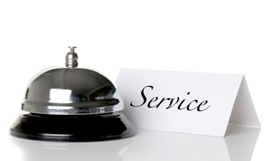tarting a business centered on your talent for writing has similarities and differences to opening any type of business. As you embark on a new year, now might be the right time to finally start the business you’ve been dreaming of or to re-evaluate your writing business to ensure that you’re doing it the right way. From the type of business entity to establish, setting up your office, and writing a business plan to marketing, working with clients, and establishing repeat business, you can learn the tips, tricks, and advice that work for those writers who have paved the path of success before you.
Legally Speaking
While a writing business tends to be a very creative form of business, you have to step into legal mode when choosing the business entity that works the best for your business: sole proprietorship, partnership, corporation, or limited liability company (LLC). Unfortunately, there is not a one-size-fits-all option, so you should evaluate each type of business entity. Once you learn the pros and cons of each type of structure, then you can choose which one works best for you.
- Sole proprietorship: A sole proprietorship is the most popular and common type of writing business, especially when first starting out in business. For one, a sole proprietorship is the easiest business entity to establish and operate. The advantages of a sole proprietorship include: you own 100 percent of the business and do not have to file annual documents, such as that of a corporation and other business entities. You also don’t have to file separate tax returns for the business; you simply claim the business income on your personal returns. One of the disadvantages is that you own 100 percent of the business, which includes the assets and the liabilities—making you personally liable for anything that happens with the business.
- Partnership: Partnerships have two or more business owners that share the profits and losses of the business. The percentage of ownership typically correlates with the percentage of investment each partner makes in the business. The primary advantage of establishing a partnership is the business lives on after the death or departure of a partner because the existing partners remain or a new partner can take the old partner’s place.
- Corporation: A corporation is the most formal type of business structure. The owners of the corporation are shareholders. The primary drawback of corporations is the recordkeeping and document filing requirements. For example, you have to create Articles of Incorporation to form the corporation. States also require corporations to file an annual report, and corporations must record the minutes from shareholder meetings. It is possible to be a corporation and be the sole owner and employee of the business.
- Limited Liability Company: A Limited Liability Company (LLC) is a hybrid between a partnership and a corporation. The owners of an LLC are members. The members have the same liability protection as a corporation, but LLCs have the recordkeeping requirements of a partnership. An LLC also limits the tax liability on the members because the members pay taxes on a personal or business level, but not both.
You should consider talking with an attorney or tax advisor before making your final decision. One or both of these professionals help to guide you to the business structure that best fits your personal and professional financial situations.

“...you can write off a portion of your mortgage or rent, utilities, and more as it relates to your home office.”
Creating Your Workspace
When it’s time to set up your office, you have a few different options: home-based office, traditional office, or collaborative workspaces. Before you make your final decision, you should weigh the pros and cons of establishing each type of office. Once you decide the type of office that’s right for you, then learn the basic supplies and equipment you need to get started and operate your writing business.
- Home-Based Business: Especially when starting out as a small business, a home office might be the ideal workspace for your writing business. If you have the space you can dedicate to an office in your home, it is the least expensive type of office. It even has tax advantages, as you can write off a portion of your mortgage or rent, utilities, and more as it relates to your home office. The primary disadvantages include lack of professional space for face-to-face meetings, personal distractions during working hours, and a lack of distinction between personal and private space.
- Traditional Office Building: Traditional office spaces require you to rent an office in a commercial building. The primary advantage is that you have a separate space for work from your home. If you have employees or partners, this might be a more spacious option than establishing a home office. If you expect to have walk-in clients or face-to-face meetings, an office space presents the professional environment you need. The primary drawback of having a traditional office is the expense involved in establishing and maintaining the office.
- Collaborative Workspaces: Collaborative workspaces allow you to pay for an office, conference room, or cubicle when and if you need to use it. This option allows you to pay for the space you need for the length of time you need to use it, which is much less expensive than maintaining a traditional office space on an ongoing basis. This is perfect for a writer that needs to have a face-to-face meeting and doesn’t want to bring the client to her home, go to the client, or meet in a coffee shop.
Setting up an Office
The supplies and equipment you need to start your writing business are the same no matter which type of setup you choose. The difference is that you may be responsible for buying the item or the space you rent may offer you access to equipment and supplies.
As a writer, some of the basics include:
- Desk or table big enough for your computer and any research materials you might need to spread out while working on writing projects
- Comfortable chair
- Paper—printer paper, pads, and sticky notes
- Pens, pencils, highlighters, and other writing instruments
- Paperclips, staples, stapler
- Fax or e-fax (Use your computer to send and receive faxes, such as Electronic Fax www.electronicfax.org, eFax www.efax.com, MetroFax www.metrofax.com, or TrustFax www.trustfax.com.)
- Copier (or all-in-one copier, scanner, fax, and printer)
- Ink cartridges
- Computer
- Letterhead
- Business cards
- Credit card processor (If you plan on accepting credit card payments from clients, you could use websites, such as PayPal www.paypal.com, Merchant Express www.merchantexpress.com, Blue Pay www.bluepay.com, or First Data www.firstdata.com.)
- Software or online access to a word processing program
- Internet access
Business Insurance
The insurance requirements for a writing business vary by state and by the location where you choose to run your business. You should contact an insurance agent that specializes in business insurance. You can also use websites, such as the Small Business Administration, www.sba.gov.
Types of insurance to consider for the writing industry:
- Health Insurance: Unless you are covered by a spouse’s policy, when you open your own business, you are now responsible for providing your own health insurance. To find out what your options are, see WOW!’s article, Health Insurance for Writers: How to be Healthy, Wealthy, and Wise.
- Errors and Omissions: This insurance provides protection from lawsuits that originate from normal business practices in a writing business. For more on this topic, see Get Covered: Media Insurance for Writers.
- Crime: Crime insurance helps companies protect themselves against internal theft (if you have employees working for your company).
- Employment Practices: This is protection against employees suing the business for harassment and wrongful termination lawsuits.
- Cyber Liability: It protects your business from hackers and information thieves stealing your data.

“Writing a business plan for your writing business is similar to using a GPS on a long road trip...”
Writing a Business Plan
Writing a business plan for your writing business is similar to using a GPS on a long road trip—it gets your business from where it is today to where you want it to be one year, three years, five years, and a decade down the road.
The business plan should include a(n):
- Business goals
- The steps you plan to take to accomplish each goal
- A list and discussion on problems you might encounter and how to overcome them
- Outline of the organizational structure of the business
- Statement on the money you need to start and operate the business
You can obtain samples and templates for a writing business on websites, such as www.bplans.com, www.nebs.com/nebsEcat/business_tools/bptemplate, and www.planmagic.com.
Marketing the Business
One of the biggest sections of the business plan is the marketing plan. The marketing plan information should include:
- A very clear and detailed description of your ideal clients or audience
- Marketing objectives
- Online marketing strategies
- Offline marketing strategies
- Calendar/checklist
Putting your marketing plan in writing helps you to use it as a guide to implement the marketing tactics and techniques that get your services in front of your ideal clients. The techniques and tactics can vary widely, depending on the type of writing you do and the type of clients you are trying to attract. You can learn more about putting the details of your marketing plan together in Get Your Marketing Plan in Shape: How to Put Muscle into a Marketing Plan.
Some of the best techniques writers have found in marketing their businesses include having an online platform, such as a website and/or blog, to feature their work; social media networking; and establishing referral sources, such as writers that do not cover the genres they do.

“The key to creating a successful writer and client relationship is to provide superior customer service.”
Working with Clients
Before you start working with clients, you should prepare a proposal for the writing work they need done. In order to provide the client with an educated estimate, you first need to schedule an in-depth phone conversation or face-to-face meeting, where you can collect the information you need to put the proposal together. Most writers have a questionnaire they go through with the client to collect pertinent information.
If the client agrees to work with you based on the proposal, the next step is to send the client your contract or writing agreement. The agreement lists the terms and conditions of the working relationship and should include the payment schedule, types of payments, due dates, and milestones. It’s up to you how you spread out your payments, but it is common practice to collect a deposit upfront, prior to starting the project.
The key to creating a successful writer and client relationship is to provide superior customer service. Always do what you say you’re going to do. In addition to providing good writing, your clients appreciate the red carpet treatment that they tend not to get from the “big guys.” It’s a way to differentiate your business from the rest.
Establishing Repeat and Referral Business
When you provide the level of work your client expects and you exceed their expectations in customer service, you are setting up your business for repeat customers. You are also creating the perfect foundation for asking for and receiving new clients by referral from existing clients and other potential referral sources.
Don’t be shy about asking satisfied clients for a referral either. It can be as simple as placing a statement on your final invoice for a project or sending an e-mail that asks if they know other business owners or clients that can benefit from your work as well.
Some writers offer referral incentives to clients. Again, this is up to you. You can provide the client with a percentage off their next project for each referral they send to you that becomes a new client. Some clients are simply happy in knowing that you are taking care of the needs of the referral and do not need any type of incentive to send new business your way. Whatever way you receive a referral, make sure that you always thank the person who referred the client to you, whether the referral becomes a client or remains a prospect.
Starting a writing business has the same challenges as starting any type of business. When you know what the obstacles are in front of you, it is easier to make a plan of attack on how to overcome them. You can easily overcome the majority of obstacles you encounter with simple planning and implementing the plan.
Even if you already have your writing business in place, the beginning of a new year is also a great time to re-evaluate the way you are operating your business. Whether starting out or continuing on, it’s important that you start and continue down the right path for your business to ensure success. From establishing the right business entity, setting up your office, and writing a business plan to marketing, working with clients, and establishing repeat business, you now know what you should do to help achieve the business success you are seeking.
***
Kristie Lorette works with small business owners and entrepreneurs who struggle to market their business effectively to attract the right clients on a consistent basis. What separates her service from other marketing professionals is that she only works with small businesses and only specializes in creating marketing content and copy. Because of this, her clients receive PROVEN, EFFECTIVE and extremely SPECIFIC step-by-step information on exactly what they need to do to attract clients with their marketing. As a result, those who work with Kristie attract more clients and make more money than that would have on their own. For more information on her services, visit www.actionmarketingcopy.com.
-----
Enjoyed this article? Check out these related articles on WOW!:
Making the Leap: The Transition into Full-Time Writing
Feng Shui for Writers: How to Create a Space You Love
How to Manage Your Freelance Invoices
How Much Should a Freelancer Charge?
How to Figure Freelance Taxes and Write Off Expenses
What Every Website Needs: A Checklist for Writers
How to Plan for Retirement as a Freelance Writer